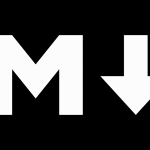 Today WordPress.com announced that the platform now supports Markdown, the plain text to HTML conversion tool. The syntax was created to be easy to read and easy to write and is rapidly gaining momentum among online publishers.
Today WordPress.com announced that the platform now supports Markdown, the plain text to HTML conversion tool. The syntax was created to be easy to read and easy to write and is rapidly gaining momentum among online publishers.
Support for Markdown has also been added to WordPress mobile apps, which will make it much easier to style and format text while blogging on the go. Very soon we should see a Markdown module added to Jetpack. If you’ve never seen or used Markdown, here’s how it looks in action on WordPress.com:
The beautiful thing about markdown is that it keeps you in the flow on your keyboard. It allows you to edit rich text without having to go back and forth with your mouse to click buttons. If you write for the web, you’re going to want to give yourself a quick crash course. Markdown will soon be everywhere.
TinyMCE Is On Its Way Out
If I were a betting lass, I’d say that this is a strong indication that TinyMCE is finally on its way out. It’s an aging method of styling text and for years has gotten in the way of people learning a better way. With a host of newer formatting tools available, TinyMCE is starting to look and feel rather dated. Extending TinyMCE to add more clunky buttons is not a solution.
If I wanted to put a nail in the coffin of TinyMCE, my first step would be to add Markdown to the largest blogging platform on the planet. With WordPress.com making a move to add support for Markdown, we may indeed be witnessing the end of the TinyMCE era. Markdown is positioned to become the de facto syntax for writing for the web. Are you ready?

As a developer, I truly love Markdown as a way to write general content. It’s handy and I use it for various reasons already.
I have two major concerns however, when it comes to the majority of people:
1) How happy/willing would people be if they need to use markdown (or even only HTML) to format their posts? (speaking of general clients and newbie users)
2) How flexible is Markdown when it comes to aligning content, adding padding/margin here and there, slightly increasing the font size differently?